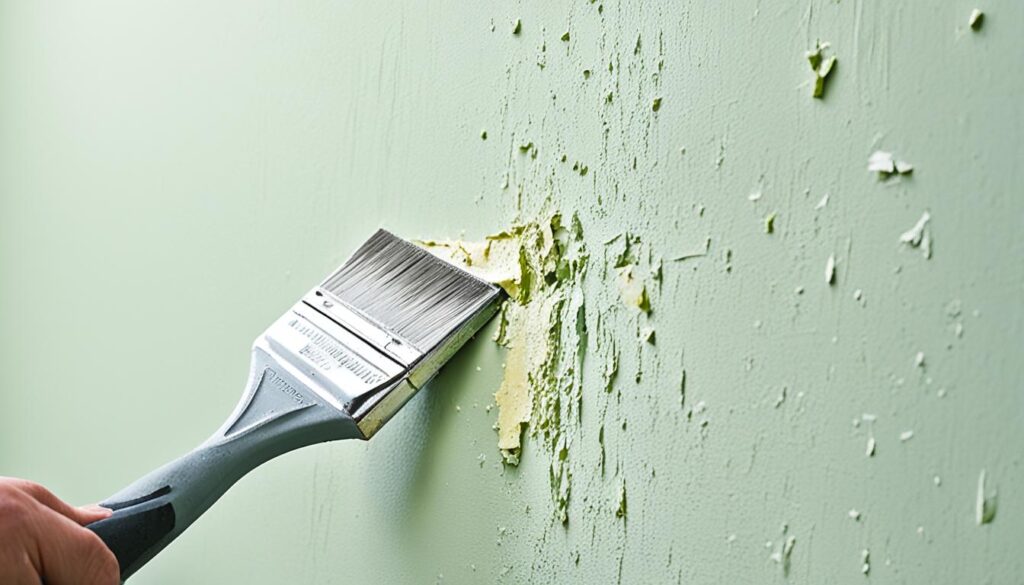
Proper surface preparation is the foundation of a successful residential painting project. It lays the groundwork for optimal paint adhesion, ensuring the paint adheres securely to the surface and avoids premature peeling, chipping, or cracking.
A well-prepared surface contributes to the paint job’s longevity, preventing future paint failures and maintaining a professional, flawless finish over time. Homeowners and painting contractors can set the stage for a high-quality, long-lasting residential painting project by understanding the importance of surface preparation.
The Essence of Surface Preparation
Proper surface preparation is the foundation of a successful residential painting project. It ensures the painting surface is clean, smooth, and free of imperfections or contaminants. This step is essential for achieving optimal paint adhesion, the cornerstone of a durable, long-lasting paint job.

Understanding the Impact on Paint Adhesion
When the painting surface is not properly prepared, it can lead to issues with paint adhesion. Poorly adhered paint is more susceptible to premature paint failures, such as peeling, chipping, or cracking. By focusing on thorough surface preparation techniques, painters can create a smooth, clean substrate that allows the paint to bond securely, ensuring a long-lasting, professional finish. Experience this awesome article for yourself.
Preventing Future Paint Failures
Neglecting surface preparation can have far-reaching consequences, leading to costly and time-consuming paint failures down the line. Investing the necessary time and effort in proper surface preparation upfront can help prevent these issues, saving homeowners and painting contractors time and money in the long run.

Painting Preparation Tips
Preparing the surface for painting is critical to make or break the final results. Before applying any paint, it’s essential to thoroughly clean and degrease the surfaces to ensure optimal paint adhesion. This involves removing dirt, grime, and existing coatings that may interfere with the new paint’s ability to bond effectively. Preparing the surface for painting is critical to make or break the final results. Before applying any paint, it’s essential to thoroughly clean and degrease the surfaces to ensure optimal paint adhesion. This involves removing dirt, grime, and existing coatings that may interfere with the new paint’s ability to bond effectively.
Cleaning and Degreasing Surfaces
Start by wiping the surfaces with a mild detergent or degreasing agent. This will help remove grease, oil, or other contaminants that could prevent the paint from adhering properly. Rinse the surfaces thoroughly and allow them to dry completely before proceeding. Start by wiping the surfaces with a mild detergent or degreasing agent. This will help remove grease, oil, or other contaminants that could prevent the paint from adhering properly. Rinse the surfaces thoroughly and allow them to dry completely before proceeding.
Once the surfaces are clean and dry, it’s essential to lightly sand them to create a rough texture for the paint to adhere to. Use fine-grit sandpaper to gently scrub the surfaces, removing any remaining imperfections or rough spots. This step will help ensure a strong bond between the paint and the surface, resulting in a durable and long-lasting finish. Be sure to wipe away any dust or debris generated during the sanding process to prevent it from getting trapped under the paint.
After sanding, take the opportunity to fill in any scratches, dents, or holes with a suitable filler or spackling compound. Allow the filler to dry completely per the manufacturer’s instructions before lightly sanding it to a smooth finish. This will ensure a uniform surface for painting. If necessary, repeat the cleaning and sanding process to achieve a smooth, even surface free of defects. With the surface preparation complete, you can apply a primer, if necessary, and finally, the paint itself.
Repairing Cracks, Holes, and Imperfections
Once the surfaces are cleaned, it’s time to address any cracks, holes, or other imperfections. These issues must be repaired using the appropriate filler or patching compound to ensure a smooth, even substrate for the paint to adhere to. Sand the repaired areas to ensure a seamless finish, and then wipe away any remaining dust or debris.
These painting preparation steps set the stage for a successful residential painting project with exceptional paint adhesion and long-lasting results. The surface preparation process may take some time, but a crucial investment will pay off as a flawless, professional finish that stands the test of time.
Painting Done by Angels is a Scottsdale and Phoenix, AZ-based company specializing in exterior and interior painting projects. With over 15 years of experience in the paint industry, our family-owned and operated business is committed to excellence. We are fully licensed, bonded, and insured, ensuring that your investment is secure with us. Our goal is to consistently deliver outstanding results to our valued customers.


